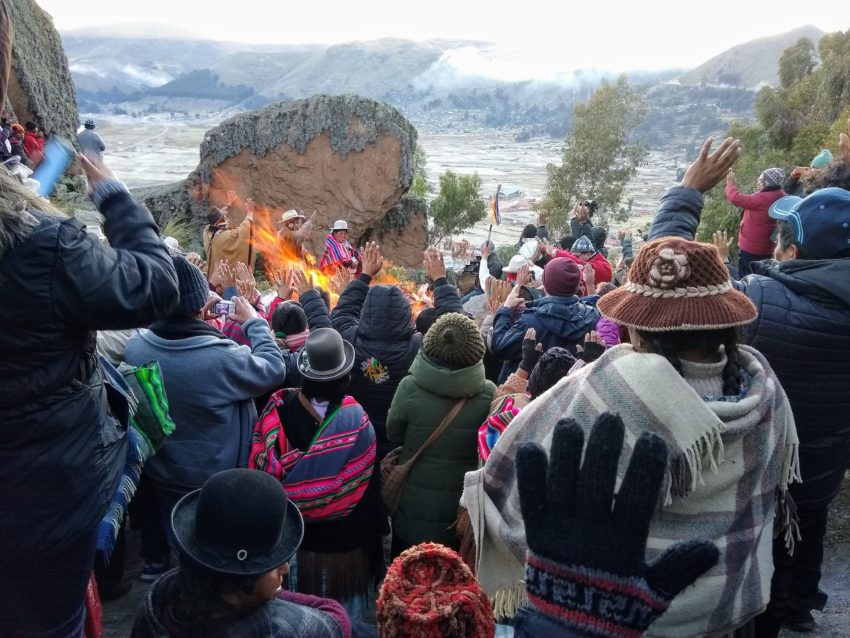While our friends in the US are sweating in the summer heat, we are freezing our arses off here in the Southern Hemisphere. But Copacabana’s Winter Solstice ritual welcoming the return of the sun to Lake Titikaka – the birthplace of the Incas – warmed our hearts.
Our Solstice Shenanigans started on June 21 before sunrise, when we joined a pilgrimage of a few thousand locals on a trek up a steep, rocky hillside to witness the archeo-astronomical wonder of the “Horca del Inca.”
Each year on the Winter Solstice (and the day before and/or day after), the rising sun shines through a strategically carved hole in a giant rock to display a roundish glow on a carefully placed rock slab laid horizontally between two tall stones overlooking Lake Titikaka. The “sun gate” was built more than 3,000 years ago by the Chiripa people, who predated the Incas. This is just one of many sun gates created by the Chiripa and Inca people, whose descendents populate Bolivia and Peru.
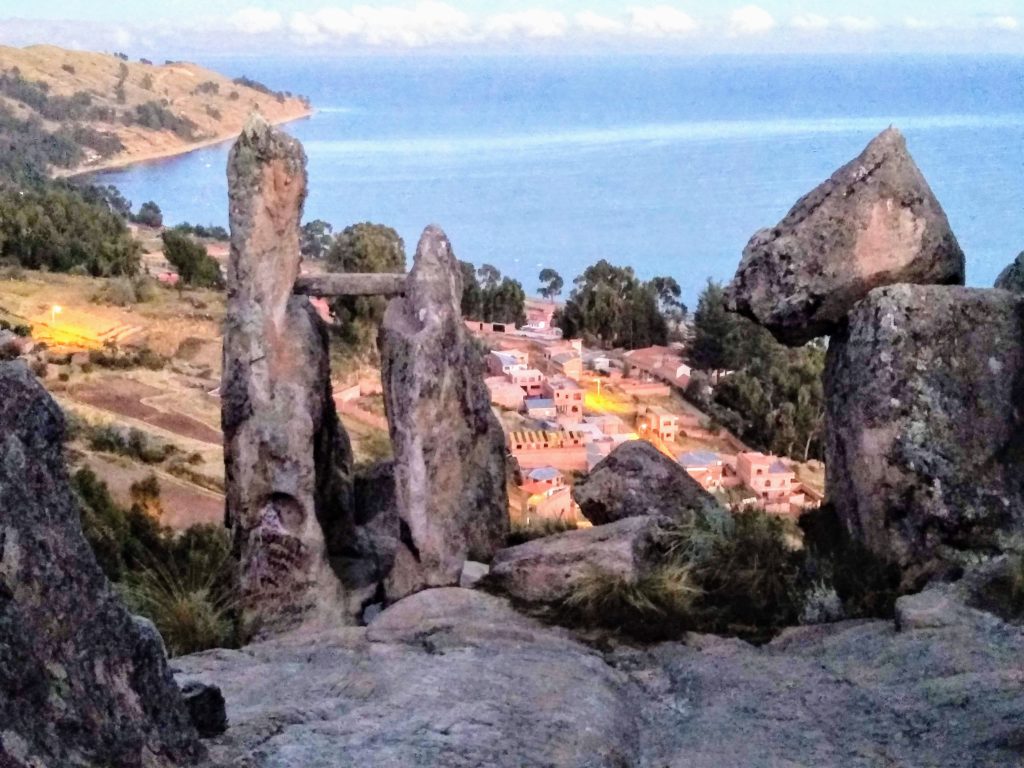
When the Spanish arrived in the 1500s, they destroyed many of the sun gates, which didn’t comport with their Catholic religion. (Plus, they were jerks.) But they left this one intact, possibly because they thought it had another, more “practical” purpose. They dubbed it “Horca del Inca,” which translates to “Gallows of the Inca.” In other words, they thought the Incas used it to hang people, even though it wasn’t built by the Incas, and was never used to execute people. Instead, its purpose was to track the sun’s movement across the sky, mark the arrival of the Winter Solstice, and worship the Sun God.
When we arrived at an open area near the top of the outcropping, hundreds of people were already gathered around a central circle of important looking officials. A local shaman explained the significance of the site and the solstice. We were told to welcome the approaching sunrise with raised hands, embrace the light by hugging ourselves, and carry the warmth and blessing to the Horca del Inca (just around the corner) to await the astrological phenomenon.
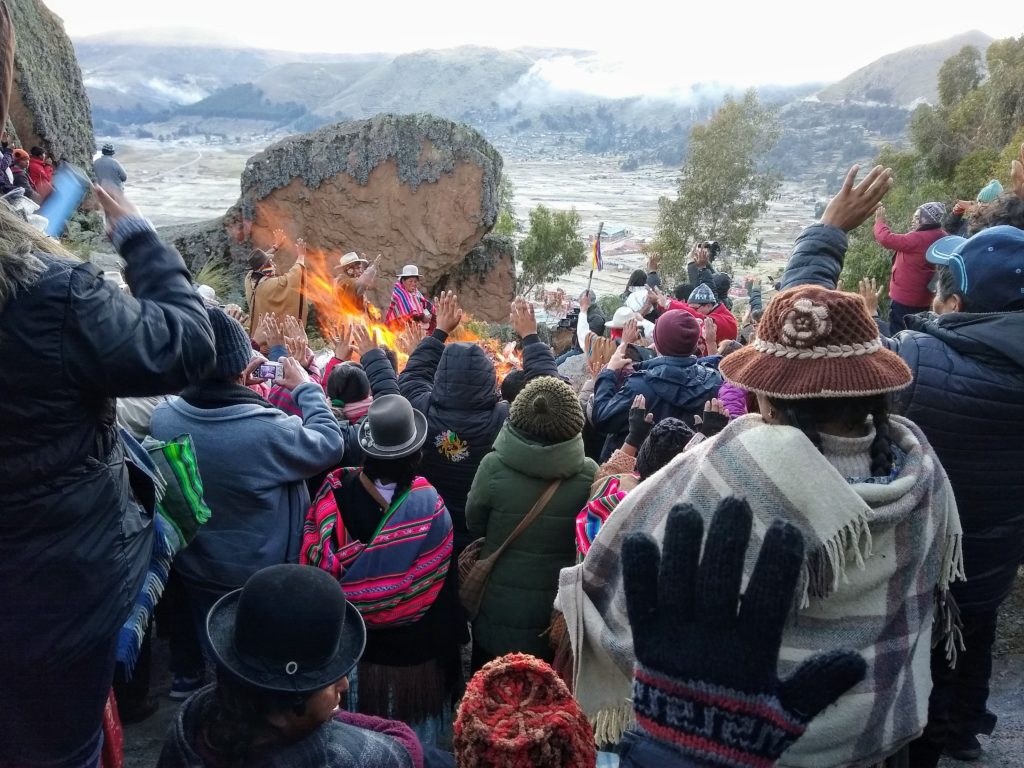
As the rising sun began to glow behind a distant mountain, locals splashed alcohol onto a pile of offerings (no humans or animals were sacrificed, though some of the alcohol did find its way into the worshipers) which was set afire once the full sun was in view. The shaman shouted, “Long live Bolivia! Long live Copacabana! Long live Lake Titikaka!” to which the crowd responded, “Ay Ay Ay!”
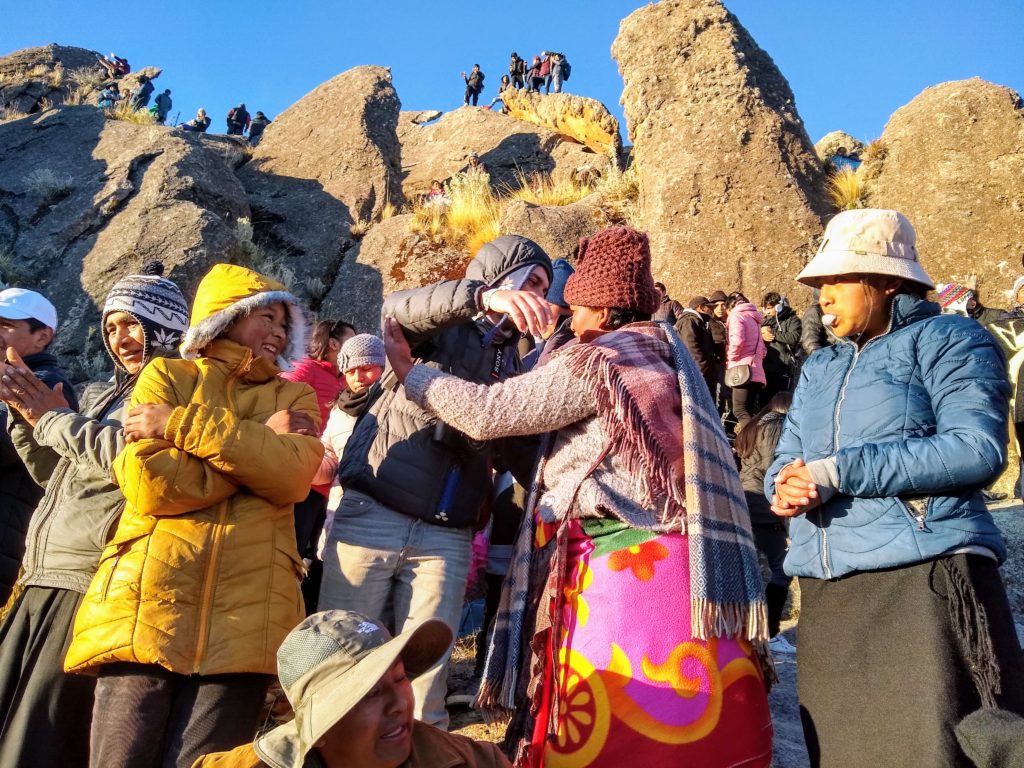
After hugging ourselves and each other, we made our way over a rocky hill to the Horca del Inca – more accurately known as Pachat’aqa – where we waited for the sun to beam through the sun gate and onto the horizontal beam. Just before the sacred moment, a young man and two young women dressed in ritual Incan clothing approached the Horca del Inca to be blessed by the Shaman.
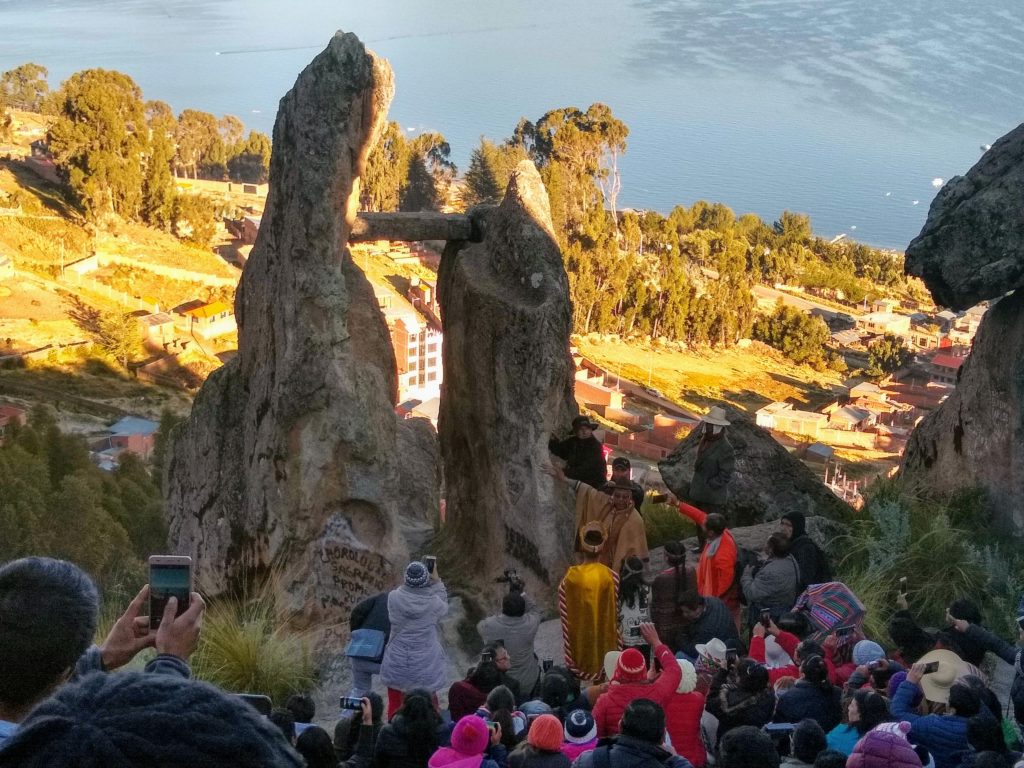
After what seemed like an eternity in the cold morning air, a splash of light illuminated the vertical rock on the left, and a rough circle of sunshine appeared on the far left side of horizontal beam.
Three thousand years ago, when this sun gate was constructed, the light would have hit the beam directly in the center. Over the course of a lifetime, the circle of light would have moved slightly. And over the course of three millennia, the sun spot has moved considerably. Scott suggested that the astral clock needed adjustment, but the locals didn’t seem to mind.
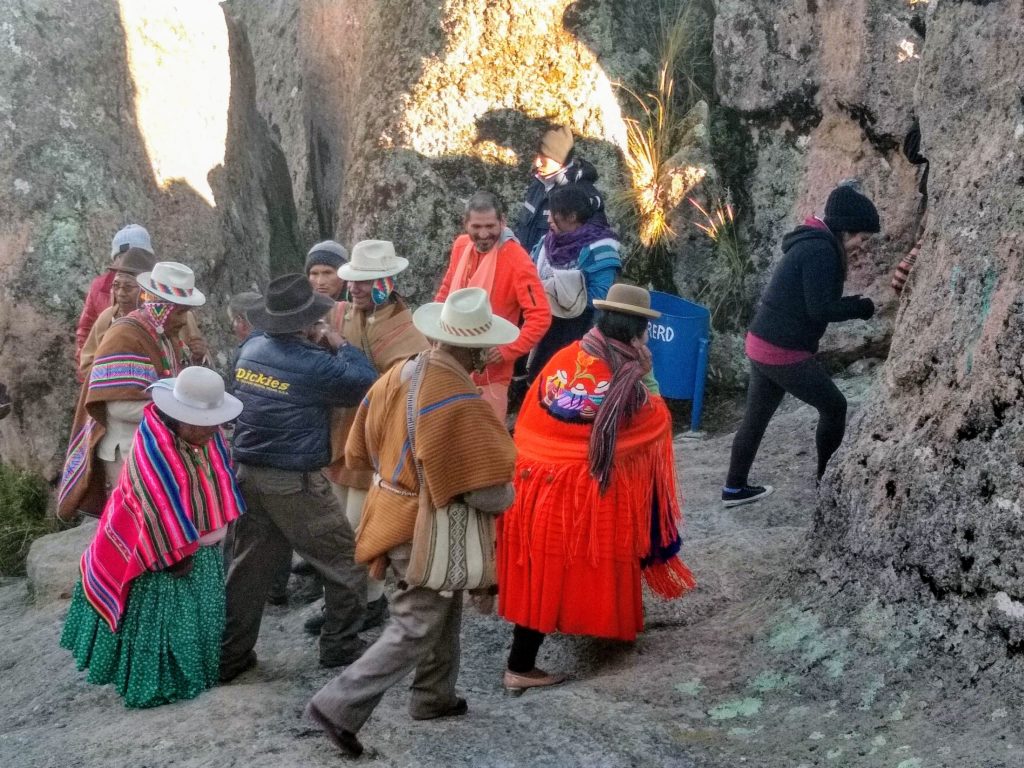
After the sun spot moved from the horizontal beam to the inside of the tall stone on the left, most of the locals made their way down the carved stone steps into town, while dozens more stayed on site for music, dancing, and drinking – mostly liter-sized bottles of the local Paceña beer carried up to the site by burros. The party eventually made its way into town and continued into the wee hours of the next morning, long after we had fallen asleep. Sadly, the warmth of the solstice sun did not linger into the night, so we were grateful for the generous layers of wool blankets our hostel host had piled onto our bed.
Ay Ay Ay!
